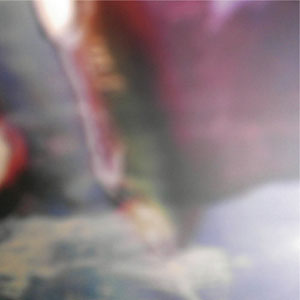Cupp Cave Retina Waves
In our recent profile of multifaceted artist François Boulanger, the Belgian producer noted that the […]

In our recent profile of multifaceted artist François Boulanger, the Belgian producer noted that the main distinction between his two monikers, Ssaliva and Cupp Cave, is the process with which he crafts the music. Boulanger favors more analog-centric approaches when recording Ssaliva’s tunes, while Cupp Cave is primarily an affair organized on computers, he said. Be that as it may, gritty tape hiss and washy aesthetics still overshadow the clik-clak rhythms and cut-and-paste synth melodies featured on Boulanger’s latest Cupp Cave record, which helps make Retina Waves yet another solid offering of the prolific beatmaker’s kind of homegrown, esoteric house productions.
Followers of Boulanger’s work will notice how Retina Waves is quite unlike Cupp Cave’s last record, 2011’s ravey Dice Pool 10″, and that it has much more in common with the excellent RZA EP, which the artist released earlier this year as Ssaliva. Though the new “mini-LP” opens with the hard-edged stomp of “Airlining” (a sound that is revisited with even better results on the uptempo “She Smells Like Sun Rays”), there are sufficient bits of low-slung, hypnagogic sample work littered throughout the record. “Bed Slap” and “Glimlach” both offer brief-but-alluring experiments with the juxtaposition of speaker-rattling bass and lush melodies obscured by dust and vinyl crackle, as do some of the lengthier productions, like the underwater bounce of “Mouth Rip” and the disorienting “Waver.” Those tracks exhibit Boulanger’s proficiency with stripping dancefloor genres of their club-appropriate garb and dressing them in half-remembered nostalgia and mystical vibes.
It’s ultimately “Kid’s A Loner” and “Tigepath” that score the highest marks on Retina Waves. Like most of the record, both cuts rely heavily on their own repetitious loops. “Kid’s A Loner” touts a submerged piece of quasi-R&B bolstered by thudding kicks at its core and “Tigepath” consists mostly of a four-by-four rhythm that bubbles with skipping metronome blips and what sounds like mangled guitar samples. Each track is wrapped in its own subtle ornamentation, but Cupp Cave’s insistence not to defer from the mobius strips he builds his productions on could understandably be hard for some to digest, especially because this is music better suited for headphones and home stereos rather than Funktion Ones. But if you willingly go forth on each of the nine psychic journeys Boulanger presents on Retina Waves, you may find yourself inexplicably mesmerized by the wealth of peculiar nuances and enticed by how commanding each groove can be despite such understated arrangements.

